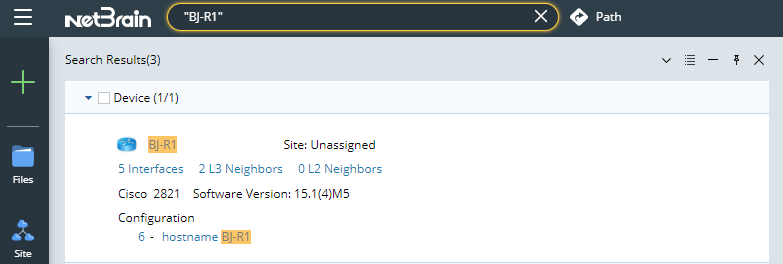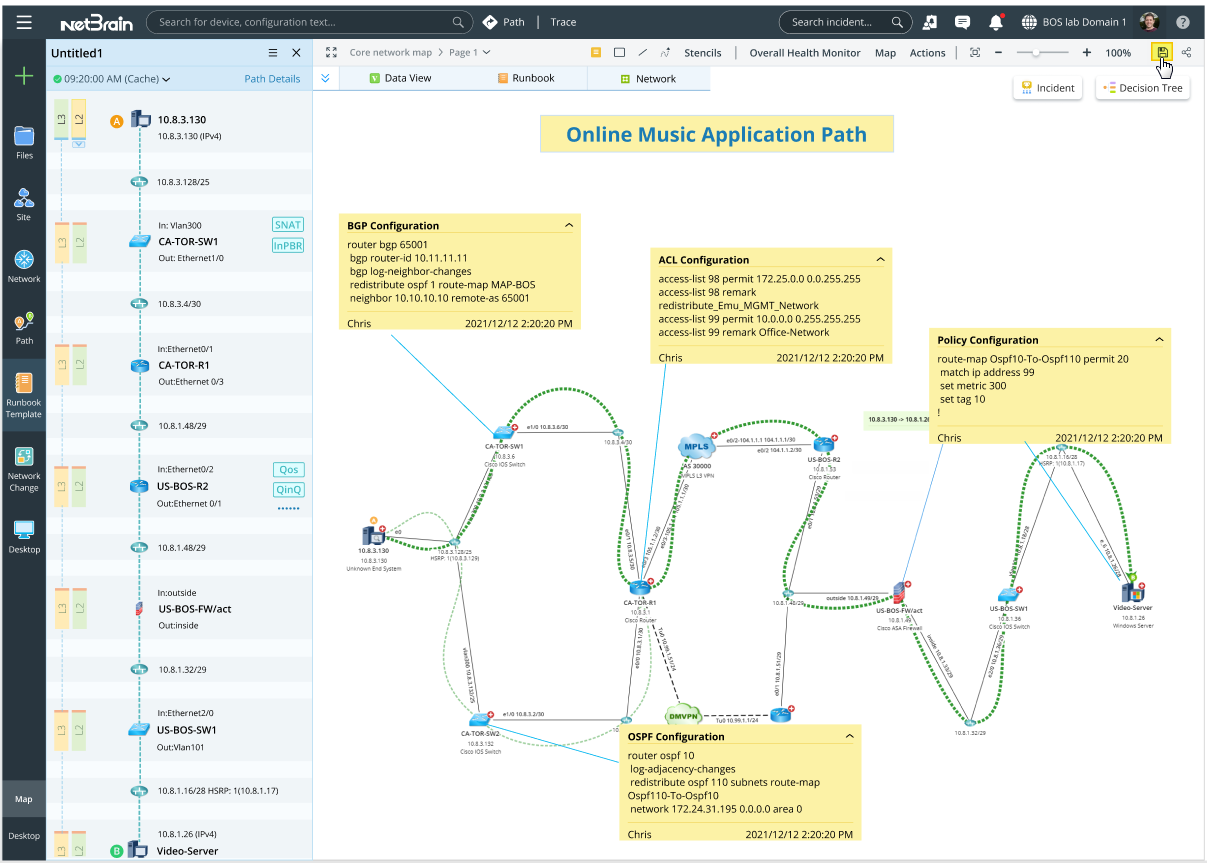Create Map on Demand for Any Task
With NetBrain, a Dynamic Map is the primary user interface to the network. Each unique task may require a unique map to provide the foundation for visibility and automation. Each Map is typically created on-demand through one of several methods:
- Search and Map
The Search bar in NetBrain acts like a Google search for any data within your network. Search helps you leverage the power of big data to ensure you can quickly find and visualize any relevant network information. Simply entering a free text string into the bar will run a search across your domain for matching any data element. For example:
- Enter a Hostname or IP address to locate a device and map its neighbors.
- Type IOS 15.5. to see all devices that currently run this firmware.
- Search “Area 0” to discover all area border routers.
- Searching for an identified SDN Application will return all overlay and underlay dependencies.
Once the search bar identifies a device, you can create a map of it and its immediate neighbors.
To expand the field of view on the resulting Map, use the red (+) sign on each device to add its neighbors to the Map.

- Map An Application Path
NetBrain path feature emulates the real packet forwarding process and provides end-to-end visibility across any network path. In addition to looking up route tables to find the next hop, it can also investigate PBR, NAT, ACL, firewall policy, and other traffic control technologies to ensure the correctness of a path. And it understands that forward and reverses paths can be different because its data model for visualization is based on the actual device tables between the two points.
Mapping a traffic path is as simple as entering two endpoints (via IP or hostname). A hybrid L2/L3 traffic flow map is automatically calculated and drawn in real-time. In addition, NetBrain’s enhanced path framework will automatically calculate based on the topology dependency of the outbound interface at each hop and calculate path types such as L2, L3, IPsec VPN, VPLS, OTV or VXLAN.

This feature can be utilized to isolate the critical network components to investigate network or application problems, as part of design review projects, or to assure application availability proactively.
NetBrain provides a historic view of traffic paths so that users can visually compare the traffic flow patterns over time. Further, any path can be saved as the Golden Path for future comparison.

- Map an Incident or Ticket
An effective map is essential when a network problem or change occurs. NetBrain can autonomously create a Dynamic Map of the problem area at the time of the Incident via API integration with existing tools, which is referred to as triggered automation, where any incident, ticket, or alarm can trigger an API call into NetBrain. Its input parameters are used to trigger map creation.
Triggered Dynamic Maps enrich each ticket with a contextual map and collected diagnostics, significantly reducing the time spent troubleshooting and improving organizational MTTR.
Typical events which may trigger a map creation include:
- Network Alarms (e.g., from SolarWinds)
- Incident Tickets (e.g., from ServiceNow)
- Security Event (e.g., from Splunk)
- Device Changes